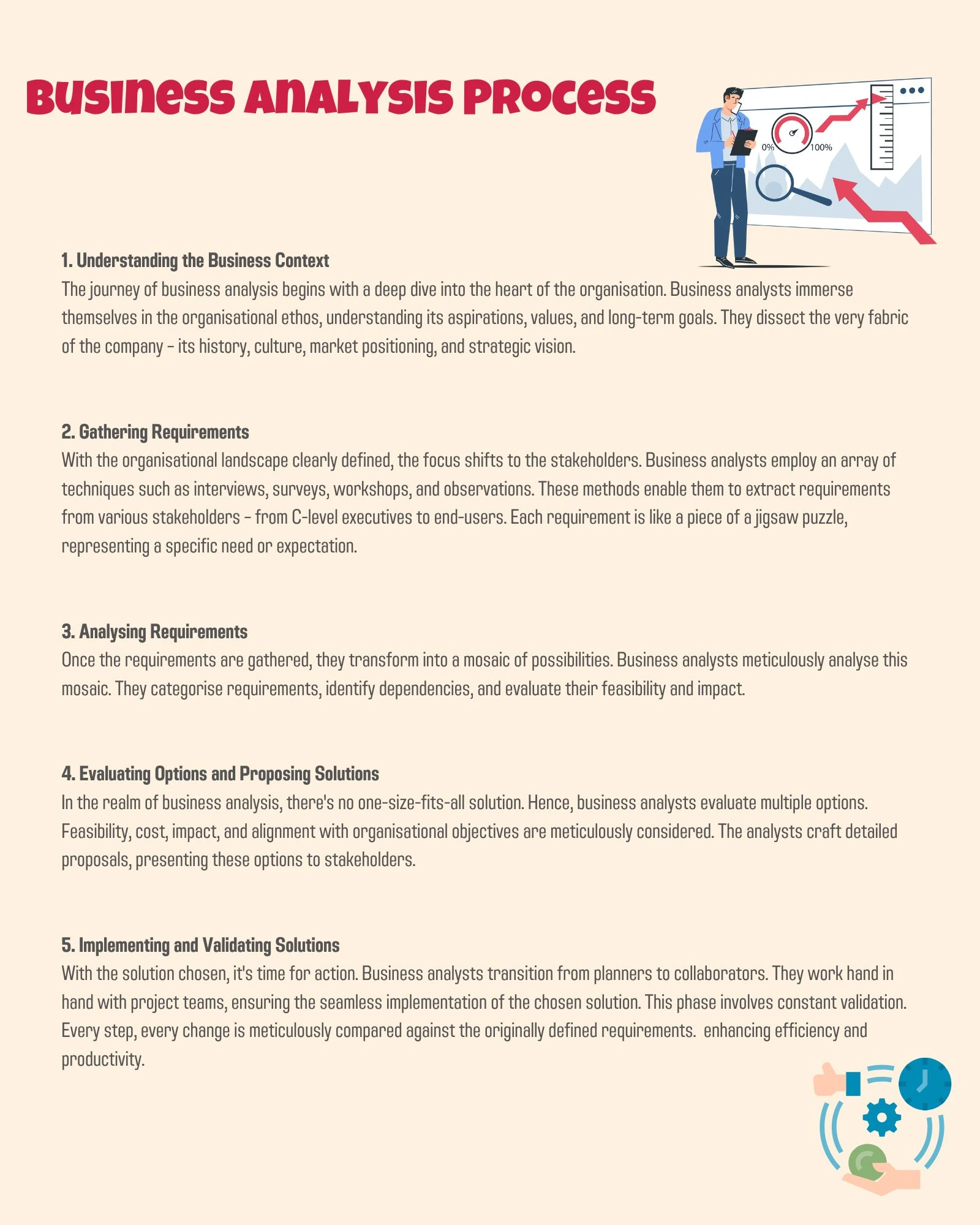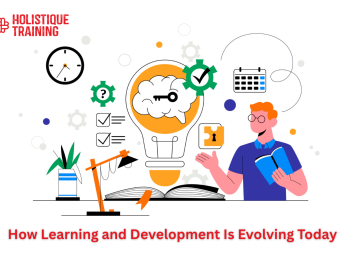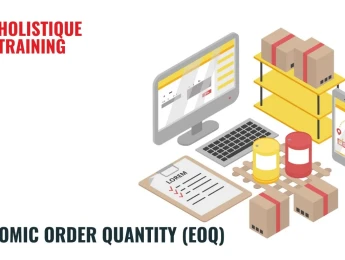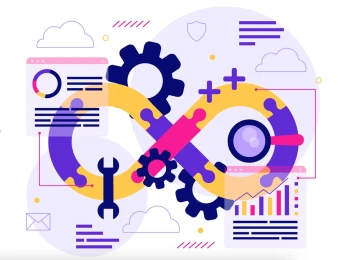- Table of Contents
- Introduction
- What Is Business Analysis?
- Why Business Analysis?
- Understanding Business Needs
- Enhancing Operational Efficiency
- Driving Innovation and Growth
- Mitigating Risks
- Business Analysis Process
- 1. Understanding the Business Context
- 2. Gathering Requirements
- 3. Analysing Requirements
- 4. Evaluating Options and Proposing Solutions
- 5. Implementing and Validating Solutions
- Top 10 Business Analysis Techniques
- 1. SWOT Analysis (Strengths, Weaknesses, Opportunities, and Threats):
- 2. PESTLE Analysis:
- 3. Stakeholder Analysis:
- 4. Business Process Modelling:
- 5. Data Analysis:
- 6. Use Case Modelling:
- 7. Root Cause Analysis:
- 8. Cost-Benefit Analysis:
- 9. Gap Analysis:
- 10. Brainstorming and Facilitation Techniques:
- Business Analysis in Digital Transformation
- Understanding Digital Ecosystems
- Optimising User Experiences
- Leveraging Big Data and Analytics
- Embracing Artificial Intelligence and Machine Learning
- Ensuring Cybersecurity and Data Privacy
- Agile Methodologies and Digital Projects
- Implementing IoT and Smart Technologies
- Enabling E-commerce and Digital Marketing
- Innovating in Mobile Technologies
- Conclusion
Introduction
Businesses thrive in an ever-evolving landscape where strategic decision-making is the key to success. In this dynamic environment, the practice of business analysis plays a pivotal role. By thoroughly examining an organisation's structure, operations, and processes, business analysis enables professionals to identify opportunities, optimise performance, and make informed decisions based on data. In this comprehensive blog post, we will delve into the world of business analysis, exploring its significance, the step-by-step process it entails, and the top 10 techniques that every aspiring business analyst should master.
What Is Business Analysis?
At its core, business analysis is a discipline that encompasses a range of activities aimed at understanding an organisation's intricacies. Business analysts gain a holistic view of the organisation's operations by thoroughly analysing business processes, systems, and data. This understanding allows them to identify opportunities, inefficiencies, and areas for improvement. Through the application of various techniques, business analysts help bridge the gap between business needs and technology solutions, ensuring that strategic decisions are aligned with organisational goals.
Why Business Analysis?
In today's complex and competitive business landscape, business analysis is more crucial than ever. It serves as the compass guiding organisations through the intricacies of decision-making, ensuring they survive and thrive. Let’s delve deeper into the pivotal role business analysis plays:
Understanding Business Needs
At the heart of every successful business venture lies a deep understanding of its needs. Business analysts emerge as the torchbearers in this quest for understanding. By closely collaborating with stakeholders from diverse organisational sectors, business analysts decipher complex requirements and articulate them into coherent objectives. This meticulous translation process ensures that every technological solution aligns perfectly with the organisation's overarching goals. Whether it’s a new software implementation or an overhaul of existing processes, business analysts ensure that an organisation's technological backbone is firmly rooted in the soil of its business needs.
Enhancing Operational Efficiency
Inefficiencies often lurk unnoticed in the vast landscape of operations, sapping resources and hindering progress. Business analysts take on the role of efficiency architects, meticulously analysing every process, from procurement to customer service. They identify bottlenecks, redundancies, and areas ripe for improvement through detailed process mapping and analysis. By streamlining these operations, businesses save costs and optimise resource allocation, enabling them to respond swiftly to market demands.
Driving Innovation and Growth
Innovation is the lifeblood of progress, and business analysts serve as innovation catalysts. Business analysts identify untapped opportunities by diving deep into market trends, consumer behaviour, and emerging technologies. They unravel patterns in consumer preferences and market demands, enabling organisations to craft products and services that resonate with their audience. This proactive approach not only ensures relevance in the market but also fosters an environment of continual growth.
Mitigating Risks
Risks are inevitable in the turbulent sea of business. However, smart navigation can mitigate their impact. Business analysts are the vanguards of risk management. Through comprehensive risk assessments, they identify potential threats—be it market volatility, regulatory changes, or technological challenges. Armed with this knowledge, organisations can develop robust contingency plans. These plans act as shields, enabling businesses to weather storms and emerge stronger on the other side.
In essence, the imperative role of business analysis goes beyond mere problem-solving; it’s about proactive strategising, innovation, and ensuring a robust foundation for future growth. Businesses that embrace the insights provided by business analysts thrive in the present and navigate confidently into the uncharted territories of tomorrow's business world. Through their expertise, business analysts transform challenges into opportunities, making them invaluable assets in any organisation's journey toward success.
Business Analysis Process
The business analysis process is a well-defined and systematic framework that structures decision-making chaos. It's akin to a meticulously crafted roadmap that guides business analysts and stakeholders alike through the complexities of understanding, planning, and executing business strategies. Let's delve into the key phases of this intricate process:

1. Understanding the Business Context
The business analysis journey begins with a deep dive into the organisation's heart. Business analysts immerse themselves in the organisational ethos, understanding its aspirations, values, and long-term goals. They dissect the very fabric of the company – its history, culture, market positioning, and strategic vision. This phase acts as the cornerstone upon which every subsequent decision rests. Understanding the business context gives analysts the necessary perspective to align strategies with the organisation's core identity.
2. Gathering Requirements
With the organisational landscape clearly defined, the focus shifts to the stakeholders. Business analysts employ an array of techniques such as interviews, surveys, workshops, and observations. These methods enable them to extract requirements from various stakeholders – from C-level executives to end-users. Each requirement is like a piece of a jigsaw puzzle, representing a specific need or expectation. Through these interactions, analysts ensure that no stone is left unturned, gathering a comprehensive set of requirements that form the foundation of further analysis.
3. Analysing Requirements
Once the requirements are gathered, they transform into a mosaic of possibilities. Business analysts meticulously analyse this mosaic. They categorise requirements, identify dependencies, and evaluate their feasibility and impact. Tools like flowcharts, use case diagrams, and data models come into play, aiding in visualising complex scenarios. This analysis clarifies the scope and highlights potential challenges and opportunities. Stakeholders are presented with clear, visual representations, enabling them to effectively grasp the implications of different options.
4. Evaluating Options and Proposing Solutions
In the realm of business analysis, there's no one-size-fits-all solution. Hence, business analysts evaluate multiple options. Feasibility, cost, impact, and alignment with organisational objectives are meticulously considered. The analysts craft detailed proposals, presenting these options to stakeholders. These proposals are not mere documents; they are comprehensive narratives that delve into the nuances of each option. This phase fosters collaborative decision-making, ensuring that the chosen solution is not just viable but optimal.
5. Implementing and Validating Solutions
With the solution chosen, it's time for action. Business analysts transition from planners to collaborators. They work hand in hand with project teams, ensuring the seamless implementation of the chosen solution. This phase involves constant validation. Every step, every change is meticulously compared against the originally defined requirements. It's not just about implementing the solution but about ensuring it fulfils the intended purpose. Continuous validation ensures that the implemented solution aligns perfectly with the organisation's needs, enhancing efficiency and productivity.
In essence, the business analysis process is akin to crafting a masterful piece of art. It requires creativity, precision, and an in-depth understanding of the subject matter. From understanding the organisational ethos to implementing solutions that transform visions into realities, business analysts traverse this intricate process with finesse. It’s not just about analysing data; it’s about deciphering the very soul of an organisation and shaping its future with informed decisions.
Top 10 Business Analysis Techniques
To excel in the field of business analysis, it is essential to master various techniques that facilitate effective analysis and decision-making. The following are the top 10 techniques every aspiring business analyst should be familiar with:
1. SWOT Analysis (Strengths, Weaknesses, Opportunities, and Threats):
SWOT analysis enables organisations to assess internal strengths and weaknesses, as well as external opportunities and threats. By understanding these factors, businesses can make strategic decisions aligned with their capabilities and the market environment.
Example: A business analyst performing a SWOT analysis for a retail company might identify strengths such as a robust online presence, weaknesses such as outdated inventory management systems, opportunities in expanding into emerging markets, and threats from increased competition.
2. PESTLE Analysis:
PESTLE analysis involves assessing external macro-environmental factors that impact the organisation, including political, economic, social, technological, legal, and environmental factors. This technique helps identify potential risks and opportunities.
Example: A business analyst conducting a PESTLE analysis for a renewable energy company might consider factors such as government policies, economic incentives, social acceptance, technological advancements, legal regulations, and environmental concerns.
3. Stakeholder Analysis:
Stakeholder analysis focuses on identifying and analysing stakeholders and understanding their interests, influence, and potential impact on the project or organisation. This technique helps prioritise stakeholder engagement and ensures effective communication.
Example: A business analyst working on an IT project might identify stakeholders such as executives, end-users, IT support staff, and external vendors. The business analyst can tailor the project accordingly by understanding their needs and expectations.
4. Business Process Modelling:
Business process modelling involves visually representing and analysing business processes to identify inefficiencies, bottlenecks, and opportunities for improvement. This technique helps streamline operations and enhance productivity.
Example: A business analyst might use process modelling techniques, such as flowcharts or swimlane diagrams, to map out the steps involved in a procurement process and identify areas where delays or errors frequently occur.
5. Data Analysis:
Business analysts leverage data analysis techniques to identify large datasets' patterns, trends, and insights. This helps organisations make data-driven decisions and uncover valuable information for strategic planning.
Example: Using statistical analysis techniques, a business analyst might analyse sales data to identify customer segments with the highest profitability, allowing the organisation to tailor marketing strategies accordingly.
6. Use Case Modelling:
Use case modelling involves documenting and analysing the interactions between system users (actors) and the system itself. This technique helps define functional requirements and ensures the system meets user needs.
Example: A business analyst working on developing a mobile banking application might create use cases to capture scenarios such as "User A transfers funds to User B" or "User A checks account balance."
7. Root Cause Analysis:
Root cause analysis helps identify the underlying causes of a problem or an undesired outcome. Business analysts can address the root cause rather than treating symptoms by delving deeper into the contributing factors.
Example: A business analyst investigating a high employee turnover rate might conduct interviews and surveys to identify issues such as lack of growth opportunities, poor management, or low job satisfaction.
8. Cost-Benefit Analysis:
Cost-benefit analysis involves comparing the costs of a proposed solution against the anticipated benefits. This technique helps decision-makers evaluate the financial viability of projects and make informed investment choices.
Example: A business analyst might calculate the implementation costs and estimated savings resulting from adopting an automated inventory management system, enabling stakeholders to assess the return on investment.
9. Gap Analysis:
Gap analysis involves assessing the disparity between an organisation's current state and its desired future state. This technique helps identify areas for improvement and guides the development of strategies to bridge the gap.
Example: A business analyst conducting a gap analysis for a customer service department might compare the current average response time to customer queries with the desired target response time, identifying areas for process optimisation.
10. Brainstorming and Facilitation Techniques:
Business analysts often facilitate brainstorming sessions and workshops to encourage creative thinking, generate ideas, and foster stakeholder collaboration. These techniques stimulate innovation and foster a shared understanding.
Example: A business analyst facilitating a requirements gathering session for a new product might encourage participants to share ideas freely, using techniques such as mind mapping or affinity diagramming to capture and categorise their suggestions.
Mastering these techniques equips business analysts with a formidable skill set. These skills enable them to navigate the complexities of business challenges and empower organisations to make informed, strategic decisions. By wielding these techniques adeptly, business analysts become catalysts for positive change, fostering innovation, efficiency, and sustainable growth within their organisations.
Technique | Description |
SWOT Analysis | Internal strengths, weaknesses, external opportunities, threats. |
PESTLE Analysis | Political, Economic, Social, Technological, Legal, Environmental factors. |
Stakeholder Analysis | Identify interests, influence, impact for collaboration. |
Business Process Modeling | Visualise, analyse processes for inefficiencies, improvements. |
Data Analysis | Uncover patterns, trends, insights from datasets. |
Use Case Modelling | Document system-user interactions for functional requirements. |
Root Cause Analysis | Identify underlying causes of problems, undesired outcomes. |
Cost-Benefit Analysis | Compare solution costs against anticipated benefits. |
Gap Analysis | Assess disparities between current, desired states. |
Brainstorming and Facilitation Techniques | Encourage creativity, collaboration; foster innovation, shared understanding. |
Table 1: Summary of the top 10 business analysis techniques
Business Analysis in Digital Transformation
The digital landscape has revolutionised businesses, bringing unprecedented challenges and opportunities. In the realm of digital transformation, business analysis becomes a guiding beacon. Here’s how business analysis is paramount in the digital age:
Understanding Digital Ecosystems
In the digital realm, businesses operate within intricate ecosystems comprising websites, mobile apps, social media platforms, and cloud-based solutions. Business analysts dissect these ecosystems, understanding user interactions, user journeys, and data flows. Through meticulous analysis, they identify friction points and opportunities, ensuring a seamless digital experience.
Optimising User Experiences
User experience (UX) is the cornerstone of digital success. Business analysts collaborate with UX designers and developers, employing user personas and usability testing techniques. Analysts drive the design and development of digital interfaces by understanding user behaviour, preferences, and pain points. This optimisation enhances customer satisfaction and loyalty, which is crucial in the competitive digital landscape.
Leveraging Big Data and Analytics
In the digital age, data is gold. Business analysts leverage big data tools and analytics to mine valuable insights from vast datasets. They identify customer patterns, market trends, and operational inefficiencies. By employing techniques such as predictive analytics, businesses anticipate customer needs, optimise inventory, and personalise marketing efforts, driving growth and profitability.
Embracing Artificial Intelligence and Machine Learning
Artificial Intelligence (AI) and Machine Learning (ML) are transforming industries. Business analysts play a pivotal role in AI/ML projects. They define use cases, gather requirements, and ensure data integrity. Analysts guide businesses in implementing AI-driven solutions by understanding the capabilities and limitations of AI algorithms. These solutions range from chatbots enhancing customer support to predictive algorithms optimising supply chains and revolutionising business operations.
Ensuring Cybersecurity and Data Privacy
Digital transformation brings cybersecurity challenges. Business analysts collaborate with cybersecurity experts to understand potential threats and vulnerabilities. They conduct risk assessments, ensuring digital solutions adhere to data protection laws and industry standards. By integrating security measures from the project’s inception, analysts safeguard businesses against cyber-attacks and data breaches, fostering trust among customers and stakeholders.
Agile Methodologies and Digital Projects
Digital projects often employ Agile methodologies for their flexibility and adaptability. Business analysts, well-versed in Agile frameworks like Scrum and Kanban, act as the bridge between business stakeholders and development teams. They gather feedback iteratively, ensuring digital solutions align with evolving business needs. Analysts enhance project efficiency by fostering collaboration and communication, accelerating digital transformation initiatives.
Implementing IoT and Smart Technologies
The Internet of Things (IoT) and smart technologies are reshaping industries, from smart homes to industrial automation. Business analysts understand IoT devices' interconnectivity and impact on business processes. They identify IoT use cases and ensure seamless integration with existing systems. By optimising IoT deployments, businesses enhance operational efficiency, reduce costs, and create innovative, connected experiences for their customers.
Enabling E-commerce and Digital Marketing
E-commerce and digital marketing are essential components of digital transformation. Business analysts dive into consumer behaviour, analysing online interactions and purchase patterns. They collaborate with marketing teams, employing tools like Google Analytics and customer segmentation techniques. Analysts guide marketing strategies by understanding digital marketing ROI, ensuring optimal investment in online campaigns and platforms, and ultimately driving sales and brand awareness.
Innovating in Mobile Technologies
Mobile technologies are ubiquitous, reaching consumers worldwide. Business analysts understand the mobile landscape, from mobile apps to responsive web design. They analyse user feedback and mobile usage patterns, optimising mobile interfaces and functionalities. Analysts enhance user satisfaction by ensuring intuitive navigation and seamless transactions, fostering brand loyalty and customer retention in the mobile space.
Business analysis emerges as a linchpin in the digital transformation journey. Business analysts drive innovation, efficiency, and customer satisfaction by adapting to the digital landscape, understanding emerging technologies, and optimising digital interactions. Their expertise ensures businesses survive and thrive in the fast-paced, ever-changing digital world.
Benefit | Description |
Enhanced Data Accessibility | Centralised data, real-time access, improving analysis |
Advanced-Data Visualisation | Interactive, graphical representation, facilitating better understanding |
Efficient Collaboration | Real-time sharing, virtual collaboration, boosting teamwork |
Data Security and Compliance | Encrypted storage, compliance adherence, mitigating risks |
Process Automation | Automate repetitive tasks, enhancing overall efficiency |
Predictive Analytics Implementation | Utilise machine learning, foresee trends, guide decisions |
Improved Scalability and Flexibility | Scalable cloud solutions, flexible configurations, adapting easily |
Enhanced Stakeholder Engagement | Interactive dashboards, feedback integration, fostering collaboration |
Real-time Reporting and Monitoring | Instant reports, live project monitoring, proactive decision-making |
Streamlined Project Lifecycle Management | Integrated tools, seamless project flow, optimising processes |
Table 2: The benefits of digitising business analysis techniques
Conclusion
Business analysis is an indispensable discipline that empowers organisations to make informed and data-driven decisions. Business analysts drive innovation, enhance operational efficiency, and mitigate risks by understanding the business context, gathering requirements, and employing a range of analysis techniques. The top 10 techniques discussed in this blog post provide a solid foundation for aspiring business analysts, equipping them with the necessary tools to navigate complex business challenges and deliver valuable insights to stakeholders.
Remember, mastering business analysis techniques is an ongoing journey that requires continuous learning and adaptation to evolving business environments. That’s where we come in. Our ‘Business Analysis Skills and Techniques’ course is here to help you understand the ins and outs of business processes and analysis, so make sure you check it out and contact us for more information. Embrace the power of business analysis and unleash the full potential of data-driven decision-making!























